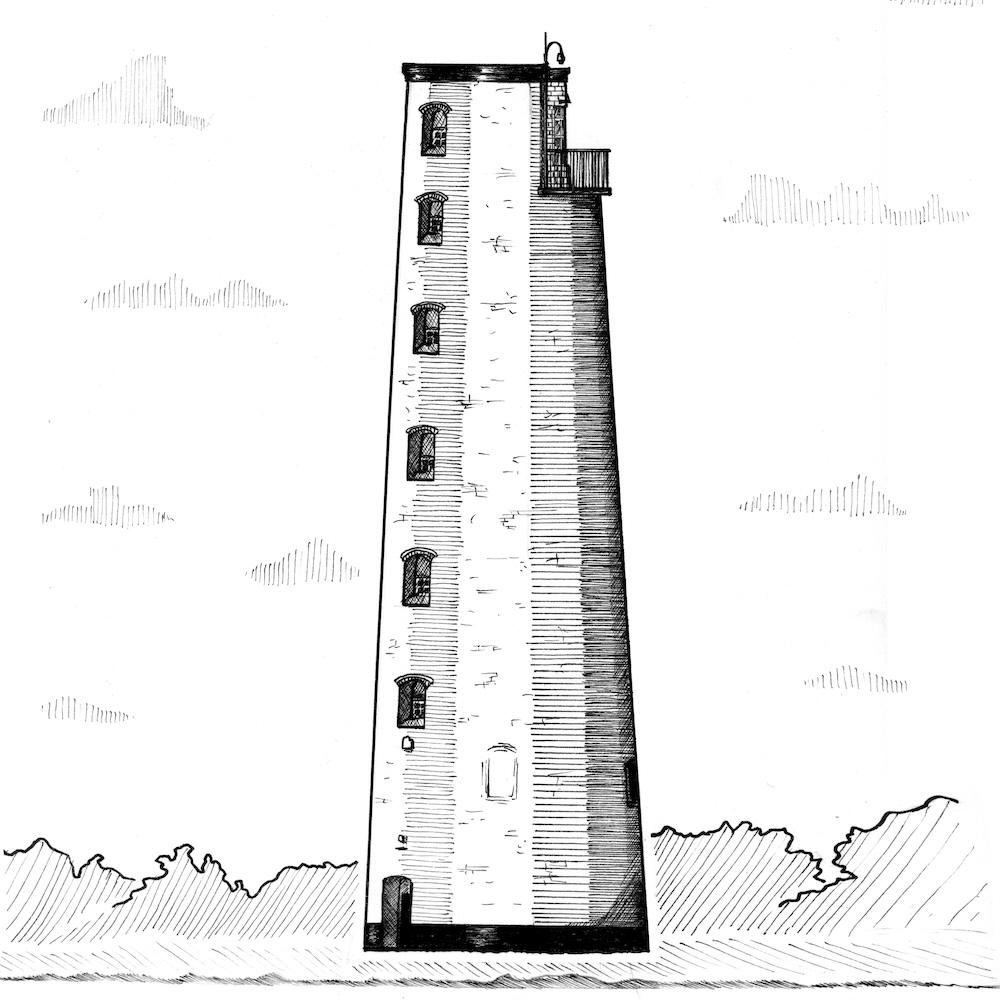Ben Langworthy’s mission to draw his way around the UK’s lighthouses takes him to Merseyside, and the oldest brick-built lighthouse still standing in Britain.

A quiet single-track road in Merseyside, heathland on one side, sandbanks covered in long dry grasses on the other. The landscape is flat here, and the horizon distant. You can see the white tower from a way off, its silhouette framed against the wide sky. Separated from the road by a sun-bleached wooden gate and a few boulders, there are a couple of picnic benches, an information board and not much else.
This is Leasowe Lighthouse: a somewhat forgotten sentinel and a lone survivor. Several of its kin once stood in the area, all helping to offer safe passage through ‘Rock Channel’, and see seafarers into the port of Liverpool.
Leasowe Lighthouse was constructed in 1763, making it the oldest brick-built lighthouse still standing in Britain. Originally known as Mockbeggar Light, it was one half of a pair of leading lights which, when lined up, gave a narrow but safe bearing through these tenuously navigable waters. Its first sibling, built a quarter of a mile away, was destroyed by a storm in 1769 and was later replaced in 1771 by another on the nearby Bidston Hill.
Leasowe Lighthouse continued to shine its light for over 130 years until 1908, by which time shifting sands had rendered it obsolete. Its last custodian was one of the very few woman lighthouse keepers of the era. Mrs Williams had taken over the role when her husband died and continued to tend the light with the help of her daughters. When the lighthouse was decommissioned in 1908 Mrs Williams stayed on, running the tower as a tea room up until her death 1n 1935. From then on it became abandoned for many years, slowly deteriorating.
Despite it gaining Grade II listed status in 1952, it continued in a state of disrepair until the 1980s, when a community group — The Friends of Leasowe Lighthouse — took on the task or restoring this unassuming local landmark. If you’re ever walking or cycling in this strangely beautiful place, why not take a moment to eat your sandwiches and pop open your flask for a brew at one of its picnic benches and ruminate on all those who once did the same at Mrs Williams’ tearooms. You might even get to look inside the tower, as it is now often open to the public.